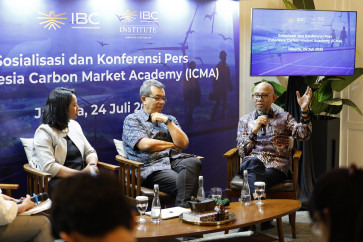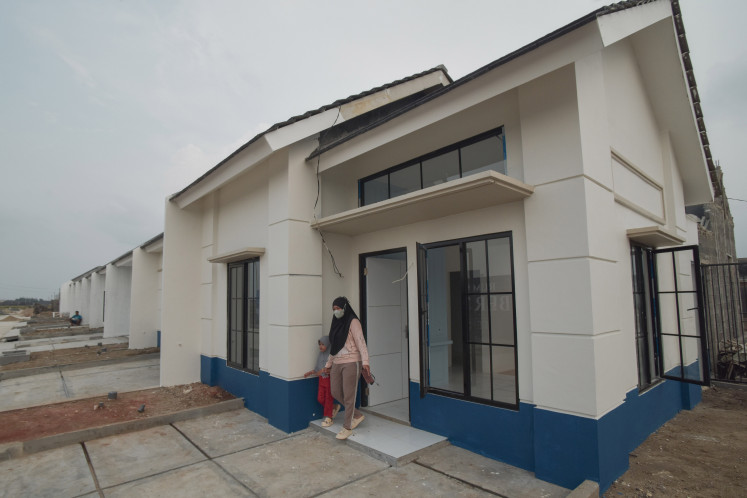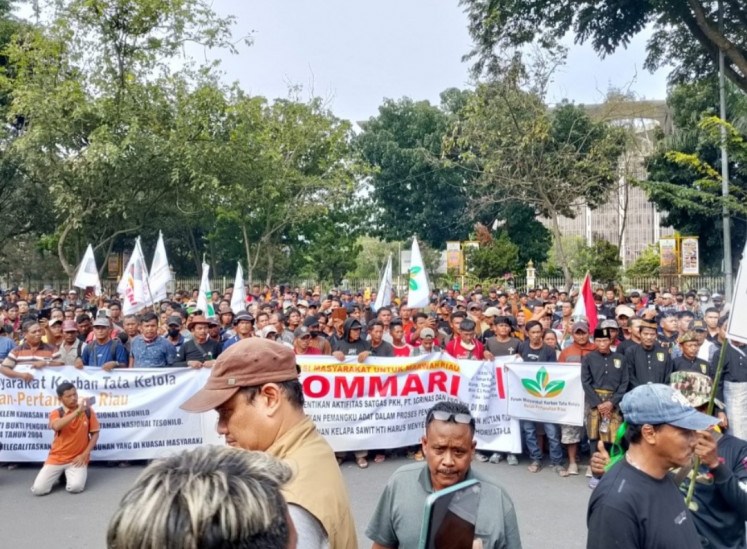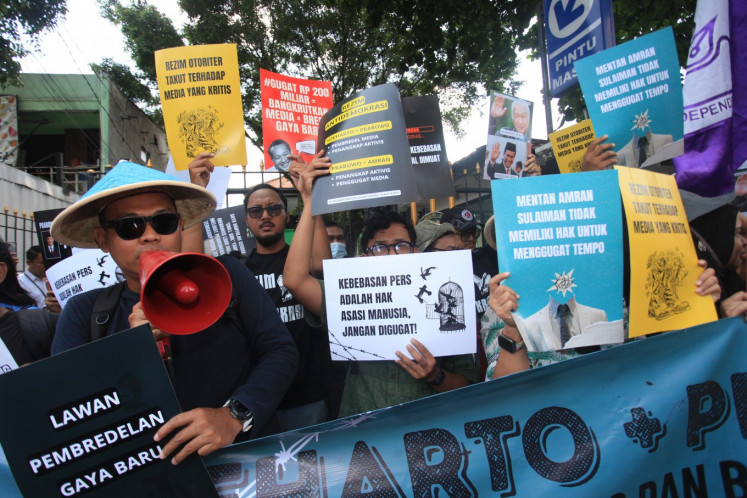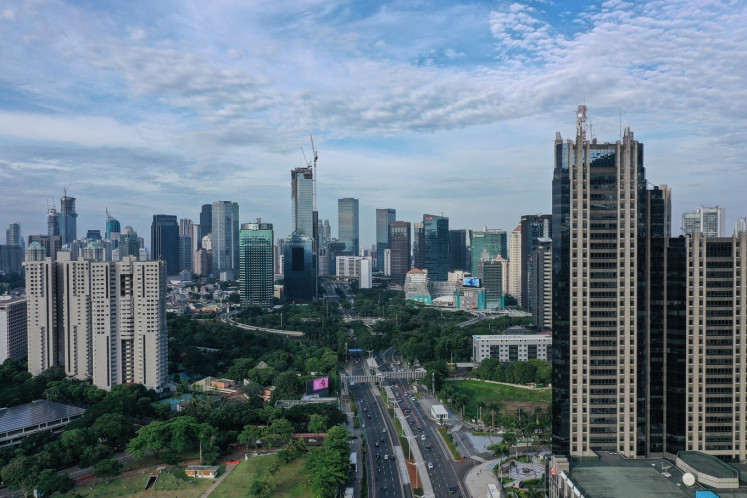Popular Reads
Top Results
Can't find what you're looking for?
View all search resultsPopular Reads
Top Results
Can't find what you're looking for?
View all search resultsASEAN the key ground of competition in US-China's Indo-Pacific strategies
The war in Ukraine has expanded the US definition of the Indo-Pacific strategy and economic framework, and that it is utilizing the war to strengthen the window period for US-European relations.
Change text size
Gift Premium Articles
to Anyone
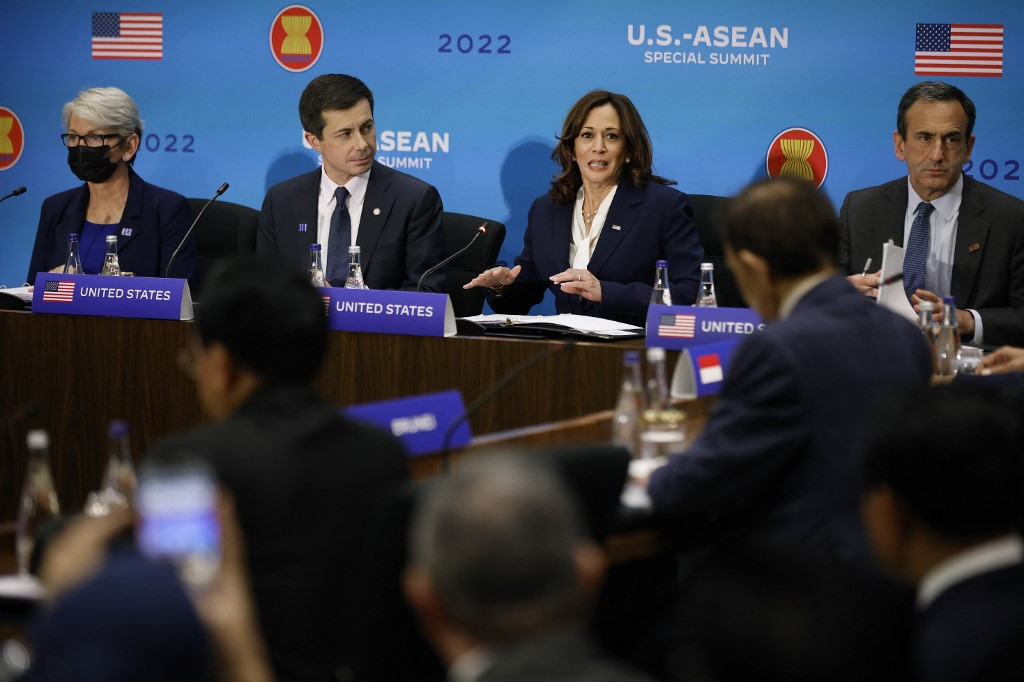 US Vice President Kamala Harris is joined by Energy Secretary Jennifer Granholm, Transportation Secretary Pete Buttigieg as she delivers opening remarks during a plenary meeting with Association of Southeast Asian Nations leaders in the Loy Henderson Room at the State Department on May 13, 2022 in Washington, DC. Focusing on trade, human rights and climate change, Harris addressed the ASEAN leaders during a two day summit in Washington. (AFP/ Chip Somodevilla/Getty Images)
US Vice President Kamala Harris is joined by Energy Secretary Jennifer Granholm, Transportation Secretary Pete Buttigieg as she delivers opening remarks during a plenary meeting with Association of Southeast Asian Nations leaders in the Loy Henderson Room at the State Department on May 13, 2022 in Washington, DC. Focusing on trade, human rights and climate change, Harris addressed the ASEAN leaders during a two day summit in Washington. (AFP/ Chip Somodevilla/Getty Images)
W
ith United States President Joe Biden's visit to Asia scheduled for later this month, Japan's ambassador to the US, Koji Tomita, stated on May 9 that the latter may officially launch a new American economic strategy for the Indo-Pacific region when he shuttles in Japan during his tour.
The new economic strategy referred to here is the Indo-Pacific Economic Framework proposed by the Biden administration on Oct. 27 last year at the 16th East Asia Summit.
Biden had claimed that it will define the “shared objectives around trade facilitation, standards for the digital economy and technology, supply chain resiliency, decarbonization and clean energy, infrastructure, worker standards, and other areas of shared interest”. The framework is extremely broad, covering multiple emerging and non-traditional economic sectors.
In the past, the US focused on security and defense capacity building in its strategy in the Indo-Pacific region, with the establishment of security alliances like the trilateral security pact between Australia, the United Kingdom, and the US (AUKUS), the Quadrilateral Security Dialogue (Quad), and the Five Eyes alliance.
In addition, it carried out frequent military exercises with countries like the Philippines and Singapore. Comparatively, the US strategy in the economic field is relatively weaker. This is especially true given its 2017 withdrawal from the Trans-Pacific Partnership (TPP). Its economic strategy in the region appears to have vanished since then.
If the new framework is used as a geo-economic tool to increase its influence in the region in order to contain and weaken China's influence, it is consistent with the US' Indo-Pacific and global strategies.
The Indo-Pacific Economic Framework includes Japan and South Korea in East Asia as American allies. They are part of Washington's spheres of influence. India, a major South Asian country with global ambitions, is also the largest ally the US seeks in Asia. For the US, India is one of the important support bases in this strategy. The other key area for the US in its push to achieve a large strategic alliance is the ten ASEAN countries located in the Western Pacific.
It is even possible to argue that the attitude and participation of ASEAN countries in this plan will determine, to a large extent, the United States' success or failure in promoting this Indo-Pacific economic strategy.
When speaking at the CSDS-CSIS Transatlantic Dialogue on the Indo-Pacific on May 9, National Security Council Indo-Pacific coordinator Kurt Campbell stated that the most important message from Biden's visit to Asia in late May will be that this is an urgent task to be accomplished in the wake of the current crisis in Ukraine. He insisted that the greater fundamental challenges of the twenty-first century lie in the Indo-Pacific region.
Campbell said that at the beginning of the Biden administration, the Indo-Pacific strategy mainly focused on cooperation with partners in the region. Now the US and European partners also have intensified contacts and dialogues on Indo-Pacific affairs.
With the crisis in Ukraine, the US was widely expected to turn its attention to Europe, leaving little attention to the Indo-Pacific, but the opposite is true, said Campbell. He noted that the Indo-Pacific region's unprecedented broad commitment to Ukraine reflects the fact that some of these countries see Ukraine as a "cautionary tale" and do not want similar military operations to take place in the region. This, in turn, prompts a great deal of strategic thinking.
Notably, Campbell declared that his most important responsibility as the Indo-Pacific coordinator is to ensure that the framework is more synergistic among leaders in Asia, Europe, and the US, that they will consider the action plan for implementation. He hopes the US and Europe will “seize this opportunity, probably the next couple of years, because we do not know how long it will last”.
Now the US intends to work with Europe on matters with global consequences, not only on the Ukraine issue but also on future Indo-Pacific strategies and tactics.
Researchers at ANBOUND point out that the war in Ukraine has expanded the US definition of the Indo-Pacific strategy and economic framework, and that it is utilizing the war to strengthen the window period for US-European relations.
Simultaneously, the US is also leading its European allies that geographically belong to the Atlantic partnership to support the Indo-Pacific strategy. With such an effort, the US hopes it will be able to unite as many allies and partner countries as possible, impose its influence and even dictate the international political and economic affairs in the region. This should allow it to effectively restrain China, its perceived major strategic competitor.
According to ANBOUND's researchers, the framework is an attempt by the US to establish a more diverse communication and cooperation with the Western Pacific region through economic collaboration. ASEAN nations are expected to play a crucial role under such a mechanism. What is certain is that China and the US will center their game around ASEAN as the US promotes its Indo-Pacific economic strategy.
We believe that in the future, the key to the broader game between China and the US in the region lies in ASEAN. For China, ASEAN is not only geographically close, with some of these countries being neighbors, but it is also China's largest global trading partner, with increasingly closer ties.
If the US does not include ASEAN in its Indo-Pacific strategy and economic framework, there will be a huge gap. The same is true for China. If China cannot maintain close economic ties and stable geopolitical relations with ASEAN, China will become rather a passive onlooker in the global geopolitical game in the future.
***
The writer is a partner, director of China Macro-Economic Research Team and senior researcher at ANBOUND, with research field covering China’s macroeconomy, energy industry and public policy.



